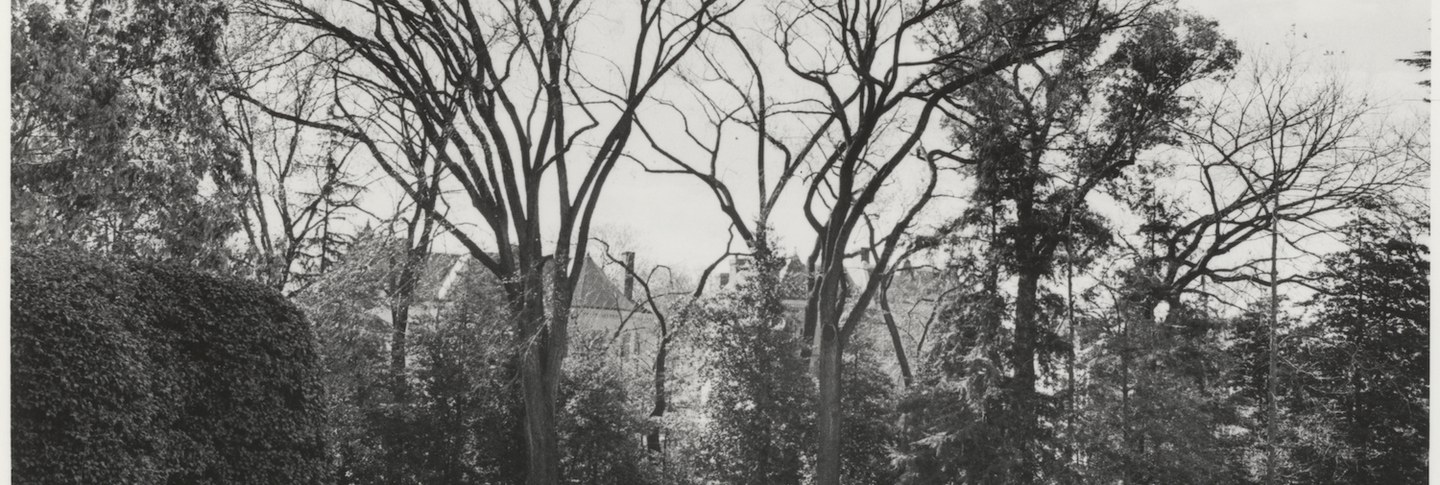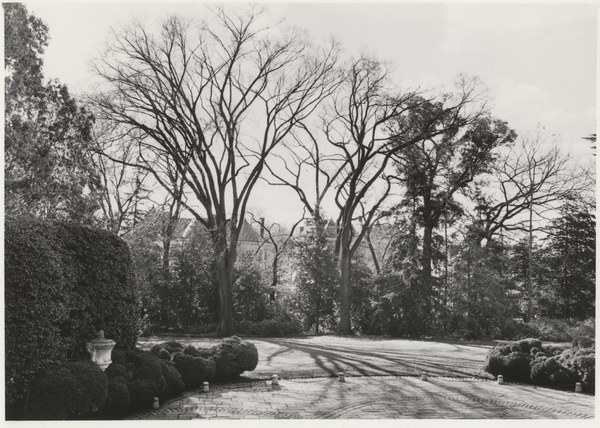The South Lawn stretches from the entrance of the house south and east to the walls at R and 32nd Streets. Since at least the 1860s when Edward Linthicum Dent owned the property, the lawn was thickly wooded with the oaks for which the land was named. In 1922, shortly after her first visit, Beatrix Farrand wrote to Mildred Bliss and described how the rolling, tree-filled lawn reminded her of the “large, ample, old, half-city, half country houses, which one associates with certain districts in England and France and to a certain extent in our own south.” This feeling of city, country, and European estate set the tone for her work in the rest of the garden.
The privacy afforded by the oaks was one of the reasons Robert and Mildred Bliss purchased the property. To increase the visual screen between the house and road, Farrand interspersed evergreens with the oaks along the wall. Maintaining that barrier as well as the wooded lawn became more difficult in later years; when Farrand wrote the Plant Book in the 1940s, many of the original oaks had died. At that time, the remaining oaks were almost all over 100 years old and in fragile health. In the Plant Book, Farrand recommended planting small oaks densely along the borders of the lawn, giving the new trees time to fill in the screen of greenery before the last of the original oaks could fail. In the 1950s and 1960s, most of the remaining oaks had to be replaced, just as Farrand expected. However, the garden staff replaced the trees to maintain the South Lawn as it appeared in the 1940s. The lawn never again held as many trees as it did when Robert and Mildred Bliss purchased “The Oaks” in 1920.

